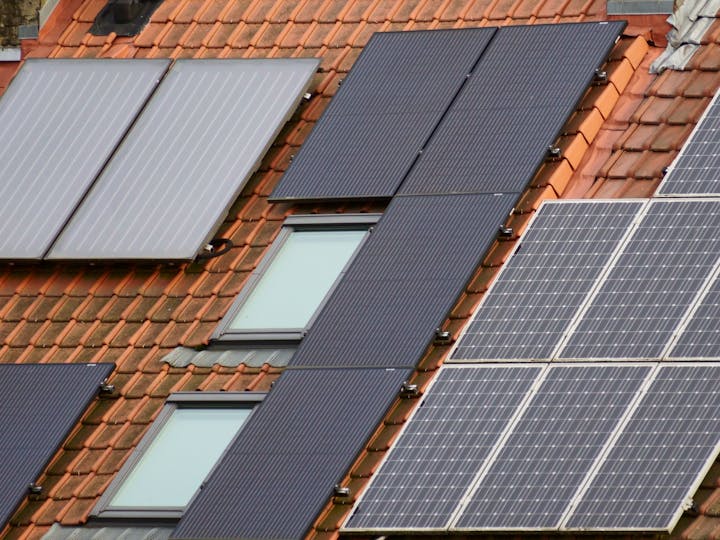Owning a house can feel like a full-time job. From rising energy bills to constant repairs, many homeowners find themselves stuck in a cycle of spending time and money just to keep things running. What makes this even harder is how many homes are simply not designed to make things easy for the people living in them.
The good news is that today’s technology and home upgrades can change all of that. You don’t need to tear down walls or buy everything brand new. A few smart changes can help your house work for you rather than against you. This guide shares practical, easy-to-understand ideas that save time, money, and effort—without adding stress or confusion.
Focus on Smart Thermostat Installation
Keeping your home warm in winter and cool in summer costs money. But many houses rely on old manual thermostats that can’t adjust themselves when no one is home. That’s where a smart thermostat makes a difference.
A smart thermostat connects to your Wi-Fi and can be controlled through your phone. It learns your routine, automatically adjusting the temperature when you leave, sleep, or come back. This helps you use less energy while still keeping the house comfortable.
For example, you can set it to lower the heat during work hours and warm things up again before you return. Installation is simple and usually takes less than an hour. You don’t need to change your entire heating system to get started.
Install Integrated Solar Roofing for a Cleaner Look
Traditional solar panels work well, but they aren’t always the best fit for homeowners who care about how their house looks. Integrated solar roofing solves that problem. This setup combines the function of solar panels with the form of regular roofing materials, blending everything into a sleek, modern finish.
With integrated solar roofing, your house produces its own renewable energy without large panels sticking out. This setup helps reduce energy costs while keeping your home’s style intact. Over the long term, it can also increase your property value. Many local programs and tax credits, such as those available in Pennsylvania, make the switch even more affordable.
Switch to LED Lighting Throughout the House
Lights are another area where many homes waste energy. Traditional bulbs use more power and burn out faster. LED lighting is a smarter choice because it saves energy and lasts much longer.
LED bulbs use up to 75% less electricity compared to old-style bulbs. That translates into lower energy bills over time. Plus, you won’t need to replace them as often, which is convenient.
You can find LED options for every type of light fixture, from bright kitchen lights to softer bedroom lamps. Many even come with dimming features, letting you control the brightness easily. Changing all the lights in your house to LED might take an afternoon, but the savings and convenience are worth it.
Upgrade to Low-Flow Water Fixtures
Water is something every home uses daily. Older faucets and showerheads often use more water than necessary, leading to higher bills and wasted resources. Upgrading to low-flow fixtures can help solve that problem.
Low-flow showerheads and faucets reduce water use while still giving you good pressure. You won’t notice much of a difference in how your showers feel, but you will notice it when the bill arrives.
These fixtures are easy to install and come in many styles. Some even have extra settings for spray patterns. Along with saving water, they also help cut back on the energy used to heat that water.
Use Smart Power Strips to Cut Phantom Energy
Even when turned off, electronics like TVs, chargers, and computers keep using small amounts of electricity. This is known as phantom energy. Over time, it adds up and raises your electric bill for no good reason.
Smart power strips are a simple fix. They shut off the power to devices that aren’t being used. You plug several things into one strip, and it automatically controls the flow of energy based on whether devices are on, off, or in standby mode.
Smart strips work especially well in areas with lots of electronics, like home offices or entertainment setups. This small change can lead to real savings without changing how you use your devices.
Invest in Smart Security Systems That Do More
Old-fashioned alarm systems often come with long contracts and monthly fees. Modern smart security systems offer a more flexible and affordable option.
Today’s systems include things like doorbell cameras, motion sensors, and window alerts. They connect to your phone, letting you check your home no matter where you are. Some also work with voice assistants like Alexa or Google Home.
Most smart systems are easy to install on your own, with no drilling or wiring. You can add new cameras or sensors whenever you want, customizing the setup to fit your needs. This keeps your home safe while making everything easier to manage.
Integrate Energy-Efficient Appliances for Real Savings
Appliances like refrigerators, dishwashers, and washing machines use a lot of energy. Older models especially tend to consume more electricity and water than newer ones. Replacing them with energy-efficient options is one of the smartest moves you can make for your home.
Look for products with the Energy Star label. This certification means the appliance has been tested to meet specific standards for efficiency. It’s not just about saving money, though. These machines usually come with extra features that improve performance, like faster wash cycles or better cooling systems.
Choosing energy-efficient appliances is an upfront investment, but one that pays off. You’ll notice lower utility bills over time, and you’ll get the benefit of newer, more reliable technology.
Choose Low-Maintenance Materials for Less Work
Some materials require a lot of upkeep, which adds unnecessary work to your routine. By choosing low-maintenance options for things like floors, counters, or siding, you can cut down on chores and repair costs.
For example, vinyl flooring is easier to care for than hardwood. Quartz countertops don’t need sealing like marble does. Exterior materials such as fiber cement siding last longer and hold up better against weather without constant repainting.
These choices may seem small, but they make a noticeable difference over time. You spend less time fixing things and more time using your home the way you want.
Making your house work smarter doesn’t have to be complicated. It’s really about paying attention to the systems and materials that affect your daily life. From installing a smart thermostat to upgrading appliances or even exploring integrated solar roofing, each step helps make your home more efficient, easier to manage, and more comfortable.
The best part is that these changes often pay for themselves. You save money on energy, water, and repair bills while enjoying a home that feels more modern and user-friendly. It’s not about doing everything at once—it’s about picking the upgrades that fit your needs and making steady improvements that last.


